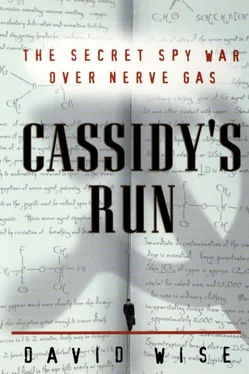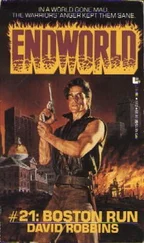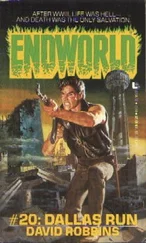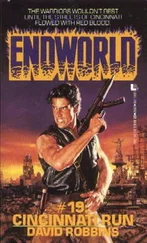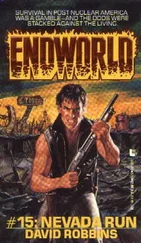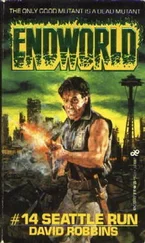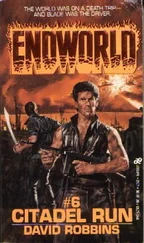Relieved, Cassidy scooped up the rock and hurried off. To signal he had cleared the drop, he then drove into Manhattan to leave a line on the same lamppost he had marked five months before. After that, he again joined O’Flaherty at the house on Rockaway Point.
Breaking open the rock, WALLFLOWER and the FBI agents found an A&P matchbook with the word Raincheck on the cover. Under the second c was the microdot with new instructions.
On October 19, Cassidy returned to New York for another meeting with the Soviets, and once again the unexpected happened at a drop site. At 2 P.M., Cassidy was supposed to leave his rock at the base of a tree near the end of a footbridge that crossed the Belt Parkway in Brooklyn. As he approached the drop, he saw smoke billowing up. A teenager had flicked a cigarette into a trash heap near the tree. Someone had turned in an alarm, and the New York City fire department was on its way; Cassidy could hear the sirens getting closer. He hesitated, then decided to stick to the plan. He dropped the rock and fled.
Only minutes after Cassidy scrambled out of the way, there were fire trucks and hoses all over the place. In an apartment building overlooking the site, the two FBI agents covering the drop could hardly believe the pandemonium unfolding before their eyes. This was definitely not in the script. Special Agent Jim Lancaster, whose Deep South accent marked him as an alien in Brooklyn, recalled the scene. “There was this fire, and the rock was right by a tree. Me and Ricky Shapiro were looking out the window and we said, ‘Oh god, the fire department is going to see this funny rock, and it’s going to burn up.’”
To the agents’ relief, the rock and its flammable contents survived the blaze intact. Two hours later, Cassidy was walking along Sixty-fourth Avenue in Queens, as he had been instructed to do on the microdot in the matchbook, when Likhachev fell into step beside him. Cassidy told the GRU man that he had looked for a civilian job in Tampa at the United States Readiness Command (REDCOM), as STRICOM was now called, but none was available.
Likhachev asked how the Morse transmissions were going, whether Cassidy was receiving them at the “principal time.” Cassidy said he was; he had not had to use the alternate transmission times that the Russians had provided as backup.
At their next meeting in March, Likhachev said, he would explain a new code. Likhachev asked whether Cassidy might be able to obtain topographical maps; after discussing that, they parted. Cassidy drove to Brooklyn to pick up Likhachev’s rock, then into Manhattan to mark the same lamp pole, and back to Rockaway Point to meet with the FBI.
Cassidy continued visiting and reporting on military bases around the country, and in March he returned to New York, drove to Brooklyn, and hid a hollow rock on the south side of Holy Cross Cemetery, near Cortelyou Road. Two hours later, he rendezvoused with Likhachev on a park bench in Brooklyn. After their meeting, he drove into Manhattan, and this time he left a piece of yellow tape facing outward on a lamppost at York Avenue and Ninety-first Street. The day ended, as usual, at Rockaway Point.
Six months later, in late September, Cassidy was back in Brooklyn, hiding a rock at another cemetery two hours before he met Likhachev near the Fort Hamilton athletic field. They discussed Cassidy’s latest surveys of military bases, and the Morse transmissions. Likhachev said a new person would be his contact at the next meeting in April 1976; Cassidy should be ready to use the parol, since they did not know each other. But the new Mike, Likhachev assured him, would be up to speed on the case.
Cassidy then picked up his rock at a dead drop in Brooklyn, left a signal in Manhattan, and returned to the kitchen table at O’Flaherty’s mother’s house, where the rock was broken open. For the first time, it contained two microdots, because the message from the Soviets was longer than usual. It directed Cassidy not only to spy on additional military bases but to try to obtain emergency planning documents from city, county, or state offices.
Although there had still been no discussion of the “new code” that Likhachev had mentioned, the secret writing in the rock instructed Cassidy to travel to a location in the Bronx for a meeting on the first Saturday after he received a Morse transmission with twenty groups or to go to a dead drop in the Bronx for a pickup if he received a coded radio message with twenty-four five-digit groups.
In April, Cassidy was back in the New York area, this time to leave a rock at a drop site in suburban Yonkers with more reports on military bases. The FBI had seen Likhachev moving around New York several times with Vladimir Vybornov, who was listed as a “public relations officer” at the Soviet UN mission. His wife, Aleksandra Vybornova, also worked in the public relations office. The bureau predicted that Vybornov would turn out to be the new Mike, and it was right.
On April 10, FBI agents watched Vybornov fill a dead drop near Pinebrook Boulevard in New Rochelle, in Westchester County. He was accompanied by a woman, believed to be Aleksandra. Cassidy cleared the drop, left a piece of yellow tape on a lamp pole at 201st Street in Manhattan, and traveled to Rockaway Point. There was no meeting this time with Vybornov, but instructions on a microdot inside another A&P matchbook told him to prepare for a meeting with the new Mike in October.
Cassidy’s report to the FBI of his first meeting with Vybornov, on October 9, 1976, was detailed and meticulous, as usual. At 2 P.M., he left his rock at the base of a street sign at Palmer Avenue in the Bronx. The rock contained a report of his reconnaissance of military bases in Georgia.
He then drove around to kill time before the meeting. “I parked the car just off Gun Hill Road… at approximately 1552 hours. I waited in the car until 1557 hours and I then walked to the spot arriving at 1600 hours.” Cassidy pretended to be waiting for a bus. “I noticed a person in dark clothes w/umbrella at the corner of NW Fenton and Gun Hill…. This person stopped in front of me and as I looked at him he asked me about a drive-in and when I responded he smiled and said ‘Hi I’m another Mike.’ We shook hands.”
As they strolled along the street, the sixth Mike talked about the wet weather and wanted to know where Cassidy had parked; he had not brought his own car, he said, because of the rain. The new Mike not only had a halting command of English, but it was soon apparent he was not cut out for a career in espionage. Vybornov, it became clear, wanted to break all the spy rules because of the inclement weather.
He asked Cassidy to drive back to the drop site at Palmer Avenue, retrieve the rock he had just left there for Vybornov, and bring it directly to the Russian. They would then simply exchange rocks in Cassidy’s car. This was an unprecedented request, a total departure from spy etiquette. It flouted the GRU’s elaborate procedure for using dead drops to avoid risks. But first, Vybornov had a lot of questions. As they continued walking, he asked if the microdots were legible. Cassidy said they were OK. He then told Cassidy to be sure to keep the secret writing paper wet when he developed it. That puzzled Cassidy, who explained that he dipped the paper in acetone, but after steaming it the sheet dried out rapidly. There was no way to keep it wet. Vybornov did not respond and Cassidy concluded that the Russian was in over his head.
The new Mike then grilled Cassidy closely about his children and household, apparently to reassure Moscow that his family, friends, and neighbors remained unaware of his espionage activities. “He said, ‘Do you hear from your son and daughter?’ I told him I hadn’t heard from my son since he graduated from high school. ‘How about your daughter?’” She was busy with a new career in nursing in Alexandria, Cassidy replied. “He asked if I received correspondence from friends and relatives. I said very seldom. He said, ‘Do they visit you?’ I said we have very few houseguests.”
Читать дальше
